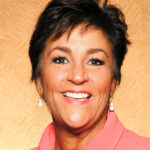Are You a Nurse Practitioner, Physician Assistant or Physician Interested in CME Credits?
2023 CME Conference and Online CME Courses
Skin, Bones, Hearts & Private Parts is a leading provider of high-quality CME conference topics covering dermatology, orthopedics, cardiology, emergency medicine, women’s health, and more. Enhance your medical education with CME from passionate, experienced speakers who inspire attendees. Our CME conference and online CME courses are a great way for nurse practitioners and physician assistants to gain information that allows them to diagnose patients quicker, feel more confident in their decisions and ultimately provide better patient care.
Choose any of our fun conference locations that cover the topics relevant to your practice or join us from the comfort of your home with our Virtual & On-demand CME courses. Check out all of our amazing topics and CME presentations offered below!
- Dermatology
- Orthopedics
- Cardiology & Emergency Medicine
- Women’s Health
- Pain Management & Pharmacology
- Diabetes
It is Getting Kind of Hairy in Here! (Rx=0.25)
Thanks to COVID, hair loss has become much more commonplace. Amanda Mull published an article in The Atlantic on November 12, 2021, entitled “The Year America’s Hair Fell Out,” specifically referring to telogen effluvium. However, there are several different types of hair loss. This session will explore some of the most common types, the clinical presentations, diagnostic criteria, and treatment options.
What is THAT in My Groin? (Rx=0.50)
It hurts! It itches! It won’t go away! Yes, we are going there. Why? Because this particular region presents with concerns that are difficult and embarrassing for patients to discuss, hard to diagnose, and extremely impactful when it comes to quality of life. We will explore such diagnoses as inverse psoriasis, lichen sclerosis, and hidradenitis suppurative.
Skin Cancer! Damn! (Rx=0.50)
What is a dermatology conference without a session on skin cancers? Let’s look at the three big contenders, their presentations, diagnostic methods, and treatment options.
Kids, Bugs & Drugs (Rx=0.50)
As a derm PA, I can honestly say I have spent the majority of the last 19+ years tending to the needs of pediatric patients. This session will look at some common (and a few not-so-common) pediatric concerns. You will certainly take away a few pearls for diagnosing and treating these little ones.
A Year in Pictures: AKA What The???
Every year, National Geographic releases their most remarkable photos in a publication called ‘A year in Pictures.’ We will spend our last session together looking at photos depicting various dermatologic conditions. You will have your chance to diagnose these conditions. We will then briefly discuss each case, diagnostic methods, and treatment options.
“We’re Number One!” Skin Cancer: Best Practices in Diagnosing and Treatment (Rx=0.25)
More people are diagnosed with skin cancer each year than all other cancers combined, with 20% of all Americans experiencing skin cancer by age 70 and nearly three deaths an hour. While highly curable in the early stages, the death rate of non-melanoma skin cancers continues to climb. In addition, the diagnosis and treatment increased by 77% between 1994 and 2014 and almost an epidemic in 2021. Consequently, all providers across every specialty must be especially tuned to understanding the basic facts of this expensive and disfiguring healthcare crisis. The presentation will identify and prevent the most common skin cancers, where they are most likely to be located, and procedures one must gain to address once suspicion is aroused.
“Take Me Out to the Emergency Room.” Sports Dermatology (Rx=0.25)
On any given day, 20% of Americans aged 15 years or older participate in some exercise and sport. Invariably, superficial injuries, contusions, infections, and open skin wounds make up most sports- and recreation-related injuries presenting to a PCP. Jogger’s nipples, dermatitis from rosin, friction blisters, sunburns, turf toe, fungal and bacterial infections, green hair from chlorine, and even sea bather’s eruptions are among the many topics that will be covered in this fast-paced, well-illustrated lecture providing tips on diagnosis and straightforward treatment paradigms.
“FUNdamentals of the Oldest Specialty”: A Dermatology Primer: Learning to Assess, Diagnose and Make Sense of Common Conditions and Lesions
The study of dermatology is often considered one of the most difficult specialties. As the largest body organ, it suffers nearly 3,000 diseases, and disorders – more than any other medical arena –, and providers tend to shy away from a thorough study. Together, we will build a framework to increase confidence in identifying and treating the bulk of the most common conditions and lesions of our clients, provide basic insight instruction in the work of dermatology, with important insight for expanding our knowledge base.
“Do It for the Children”: Pediatric Dermatology (Rx=0.25)
Treating children and teens present with many challenges: dosing is often confused with adults; few clinical trials in children; off-label use is prevalent; hepatic and renal clearances vary; the adverse effects panel is much broader, and generally, the younger the child, the less communicative or cooperative. So, what to do with the strange moles, new warts, obvious hair loss, chipped nails, dry skin, blistering acne, flaky scalp, sweating palms, and armpit cysts? Join us to explore this overview of common and frustrating conditions made simple and straightforward.
“When Candles Cost More Than Cake”: Dermatology in the Older Adult Population (Rx=0.25)
Americans 65 and older are the fastest-growing age demographic and poised to become the largest segment of American society in only a few years. This group presents with very specific needs and care, particularly with issues of skin, which must maintain its’ health and vitality through these important years. Drug eruptions, atopy, psoriasis, stasis dermatitis, intertrigo, rosacea, xerosis, maddening pruritus, and stubborn seborrheic dermatitis are only a few of the challenges. Our presentation will discuss prevention strategies, highlight risk factors and deliver solid, proven evidence-based interventions.
I Am Not Spineless
This session will focus on an all-too-common problem, low back pain. A short introduction to the anatomy will take us into the commonly seen complaints in urgent care and PCP offices. Next, we will review and understand red flags and pathologic reflexes that would alert the clinician for a prompt referral. A brief review of the treatment options will also be discussed. Video clips, X-ray, MRI, and CT imaging will be used to help demonstrate pathology. This presentation will help remove some of the fear and uncertainty of low back pain.
AM The Pain in My Neck Is Not From the In-Laws
This session will focus on non-traumatic neck pain and cervical radiculopathy. The participants will learn various exam techniques through video and a strong understanding of the neurologic anatomy associated with neck complaints. Specialized testing for cervical myelopathy will be addressed as well as a physical exam for the non-trauma neck pain patient. A brief review of the treatment modalities and radiographic findings will also be demonstrated. This presentation will assist the clinician in understanding urgent from routine pathology.
AM I Think I Broke My Rotary Cup!
This session will address a widespread problem for many generations of patients, shoulder pain. Contrary to many patients’ beliefs, there are numerous pathologies that can affect the shoulder besides rotator cuff injuries. This presentation will assist the clinician in understanding common presentations for shoulder pain with a strong emphasis on physical exam techniques. The exam techniques will better allow the provider to understand the pathology of the complex shoulder joint. Numerous videos will be used in this presentation to teach many of the commonly used specialized shoulder examination tests and what they may imply.
CXR for the PCP…Do You See What I See?
Chest X-ray (CXR) is the most ordered radiologic diagnostic, yet it can be one of the most complex to understand. CXR combines organs, bones, soft tissue and comprises innumerable pathology of the cardiac, pulmonary, and gastric systems, to name a few. This presentation will break down CXR interpretation by first reviewing what is expected. Then, multiple diagramed studies will be used, and typical findings related to asthma, COPD, cardiomegaly, infiltrates, Covid, CHF, & pneumothorax. Finally, case studies will be used to enhance the learning process.
At Least It Is Only Fractured & Not Broken
This session will be a “smorgasbord” of radiologic case studies. Numerous cases from a local emergency department will be reviewed, covering the common and not-so-common osseous diagnosis and treatment options. Topics will also include commonly diagnosed fractures, dislocations, and soft tissue abnormalities diagnosed with plain radiographs. This will be a fun participant interaction presentation.
Orthopedic Exam and CT Scans, X-rays and MRI’s, OH MY
A head-to-toe review and presentation of the key components of the examination of the musculoskeletal system will be discussed. High yield history questions and examination techniques will be detailed. Diagnostic testing for orthopedic and sports medicine chief complaints and mechanisms of injury will be discussed and recommended.
Let Me Give You a Hand in Diagnosing Upper Extremity Injury and Conditions
Upper extremity injuries and conditions are common causes of patient visits to providers. Up top! This session will review the most common issues and highlight what the clinician should listen for in the history, and which examination techniques will be helpful in arriving at the patient’s diagnosis.
Let Me Patella You Something About Lower Extremity Injuries and Conditions
This might be a knee-jerk reaction, but this is a session you all kneed. There is a wide span of differential diagnoses for the commonly injured or affected knee joint and lower extremities. We will systematically identify the evaluation, diagnosis and management of conditions and injuries which affect the lower extremities.
When the Back is Out of Whack….
Back pain for the patient can be lower posterior pain for the provider! In this session, we will identify back problems seen in primary care, along the continuum of simple and common to complex and rare, the diagnoses of spinal issues will be discussed.
Interactive Case Studies
This session will tie together concepts and techniques learned throughout the day. An interactive session, the participants will be asked to comment, help to come up with a list of differential diagnoses, and to identify key components of the history and physical examination, to make the perfect final orthopedic diagnosis.
Who’s Got Rhythm: 12 Lead ECG Interpretation Part 1
In this session, you will learn how the frontal, augmented, and chest (V) leads of the ECG align with the images on the printed copy of the 12 lead ECG. You will learn which two leads are the most useful to determine rate and rhythm. By the end of the first session, you will be a pro at on-the-spot interpretation of the underlying heart rate and rhythm.
Larger, Slower, Turned to the Side: 12 Lead ECG Interpretation Part 2
In this session, you will learn what is meant by axis, including likely causes and significance of an axis deviation, if present. You will use the “eyeball test” as one of the three ways to determine if left ventricular hypertrophy is present on a 12 lead ECG. You will get hands-on practice using a systematic approach to determine the difference between a right versus left bundle branch blocks in ECGs with wide QRS waves.
Ischemia, Injury, Infarct: Spot the Difference – 12 Lead ECG Case Studies
This session will utilize a systematic approach for recognizing acute ischemia, acute injury, and infarction in case studies of 12 lead ECGs. You will get hands-on practice in interpreting case studies to apply the knowledge gained. After this session, you will be able to recognize acute ischemia like a pro.
Prevent the Stroke: Stop the Bleed in Adults with Atrial Fibrillation (Rx=1.00)
In this session, you will utilize evidence-based risk stratification scoring tools to determine whether your patient with atrial fibrillation needs chronic anticoagulation to prevent stroke while considering the likelihood of bleeding. We will compare newer versus traditional anticoagulation options to stroke prevention, even for those with chronic kidney disease. The discussion will conclude with reviewing a systematic approach to managing bleeding, including the use of newly approved reversal agents, as appropriate, in patients on chronic anticoagulation.
Taking “Failure” Out of Caring for Adults With Heart Failure (Rx=1.00)
The treatment of heart failure (HF) patients has become very complex, including figuring out how to optimize guideline-directed medical therapy for patients with HF with reduced ejection fraction and HF with preserved ejection fraction. This session will cover the latest treatment guidelines for treating adults with both types of HF. We will review how to start and titrate optimal medical therapy, including traditional baseline therapy and two new classes of medications. You will learn strategies for overcoming barriers to medication titration from an expert in the field, including which circumstances would trigger a referral to a HF specialist. Templates for conducting phone visits (within 72 hours) and clinic visits (within 7-10 days) for those hospitalized for HF will be shared for immediate use in your clinical practice. Patient education resources and a user-friendly app for health care providers will also be shared.
EKG 123: A Basic Review
This session will focus on the “10 Step System” to reading an EKG, contagious and reciprocal changes. We will discuss the intervals on the 12 lead and how they help you make your diagnosis. In addition, we will review the segments and the waves of the EKG and compare and contrast a normal EKG against an ischemic EKG.
Cardiac Cocktails: Are We the New Bartenders? (Rx=0.50)
• AF “cocktails” and treatment strategies
• The Heart Failure “Martini” and how to adjust to taste
• The “Cardiac Happy Meal” – post-STEMI treatment regimen
• Common side effects of cardiac medications and how to spot them
Participants will learn strategies to combat AF and use the CHADS score to define risk.
CHF recipes will be discussed on how to adjust/maximize diuretics and how the new novel agents may play a role in treating CHF. We will also discuss the role of the “Cardiac Happy Meal” and tailor the medications to prevent side effects. Finally, a case-based review of some of the more common side effects of cardiac medications and how to identify them will be discussed.
Common Cardiology Complaints and How to Work Them Up
In this presentation, we will review specific questions to ask a patient who has palpitations, what findings you must look for every time, what tests to order on a chest pain patient, and what differentials to consider on someone who is dyspneic.
Cardiac Murmurs – Whispers of the Heart
We will review murmur terminology, grading, and the five murmurs that you cannot afford to miss. This presentation will be presented in a case-based fashion.
How Much Should I Worry About This EKG?
Real EKGS and cases will be reviewed. This lecture is a “Can’t-Miss” topic if you do sports physicals! We will cover the five findings that could have very different outcomes, including Brugadas Syndrome and Hypertrophic cardiomyopathy. We will also discuss the EKG Findings associated with each of these high-risk findings and the findings to spot that the machine will miss!
OPTIONAL WORKSHOP
Hands-On EKG Workshop + $99
In this 2.5 hours hands-on course, we will cover all these things and more! We will discuss reciprocal changes and contiguous leads. You will get a chance to draw them on your sample EKG and make it into a cheat sheet you can use in the clinic. You will go hands-on in your workbook with 17 EKGs in class using pattern recognition to spot the high-risk findings. This hands-on approach helps you “put it all together” finally. If you feel overwhelmed by all the things we have to know but don’t know where to start, this is a quick condensed course that only focuses on the high-risk findings you need to know to be a safe provider.
The Ins and Outs of the H-P-O Axis (Hypothalamic-Pituitary-Ovarian)
In this session, the discussion of hormonal control of the menstrual cycle will be presented. We will also review the hypothalamus to the reproductive organs. In addition, you will learn what happens when things go awry and its implications on fertility quality of life. We will also review the treatments for amenorrhea, anovulation, polycystic ovarian syndrome, and others. Most importantly, patient education techniques will provide an easy tool for your patients and staff. You will understand the normal menstrual cycle and all its distorted presentations.
Abnormal Uterine Bleeding (AUB) in the Reproductive Age (Rx=0.25)
In this session, we will explore irregular menstrual bleeding. This is a common concern experienced by menstruating people and has many potential causes. We will review the oft-cited PALM-COEIN framework, which includes the most common causes, including structural and non-structural causes. There will be a brief review of the assessment process during the focused history and physical exam, that will quickly help to understand the benefits of laboratory and imaging tools. The initial management of the identified condition and available treatment options will also be shared.
The Birthing Process
We were born for this, right? Other than pain, most people generally know very little about the process. Let’s review the physiology of pregnancy and its contributions to the birthing process, including critical hormones and adaptations. A dive in the past shows us prehistorical and ancient depictions of laboring women surrounded by supporting women. We aim to understand this connection, the advancement of maternal care, and tips and tricks for the best experience. We will also review deliveries in low-resource settings.
Optimizing the Postpartum Period for Primary Care (Rx=0.25)
In this session, we will review what should happen after birth. Historically, women will only follow up with their obstetrician for six weeks postpartum. With the high rate of maternal mortality, particularly in the postpartum period, it is important to identify the specific needs to provide appropriate care better. We will review the most common causes for maternal morbidity and mortality and potential medical complications in the future. Additionally, can the implementation of a postpartum handoff be of use? At your next visit with a mother, know how to best approach the obstetric history to optimize her health.
Ovarian Overview
The mighty ovary will be reviewed in this session. We will explore its function from early life until menopause. Additionally, we will discuss the theories behind ovarian cancer formation and its relationship to the fallopian tubes. Ultimately, you will learn to assess ovarian pathology and the dysregulation of hormone synthesis. Next time you have a patient concerned about a corpus luteal cyst, it will be a breeze to explain.
The Gyn Visit: Bleeding, Cyst, and Fibroids (Rx=0.25)
In this session, we will start getting those dreaded Gyn visits out of the way. We will go in-depth into why there is heavy or no bleeding and how to test and treat it. Next, we will tackle the cyst issue that haunts every ObGyn. You will be able to understand what and why, and how to treat. Next, the fibroid fiasco will be broken down. You will be able to discuss these concerns like a champ. We will also have time to discuss some vulvar issues.
Contraceptive Update: What’s New, Out and in the Pipeline (Rx=0.50)
Contraceptive choices have widened. In the second session, we will examine not only what’s new for women, but male contraceptives will be introduced. You will understand why you would lick one over another, and I’ll even provide a “cheat sheet” for when you get home.
STI Update: CDC 2021 STI Treatment Guidelines (Rx=0.75)
Just when you memorized the old STD treatments, CDC came along and changed the name and treatment regimen. We will discuss why the name changed from STD to STI, additional STI screenings, and the modifications in treatments. We will also discuss your role in the treatment of sexual partners.
Menopause Matrix: Rising from the Hot Flash Ashes (Rx=0.50)
STIs are not the only treatment modality to get a facelift. The North American Menopause Society (NAMS) updated menopause guidelines in 2022. A point of clarification will happen during this session. You will leave this conference confident about hormone therapy and prescribing to menopausal women.
Not Tonight Honey, I Have a Headache: Sexual Dysfunction (Rx=0.50)
We will end the day with a little sex (discussion). You will appreciate the different sexual response phases and what drugs and conditions that interfere with them. You will have all the right tools to open sexual health discussions and understand “what and why” there may be a problem. Alternatives, medications, and new treatments will be examined.
Demystifying Pain Assessment: What Every Clinician Needs to Know (Rx=1.00)
At least 116 million U.S. adults, more than the number affected by heart disease, diabetes, and cancer combined, suffer from chronic pain. Across the life span, pain is one of the most frequent reasons for healthcare visits, among the most common reasons for taking medications, and a major cause of work disability.
Effective management of pain requires an understanding of the underlying mechanisms responsible for its generation. Additionally, effective clinical interviewing and pain assessment is critical to the appropriate diagnosis and management of pain. In this presentation, a general overview of pain mechanisms will be discussed. The clinician will learn how to apply principles of effective communication and ascertain how to evaluate available assessment tools to form a framework for a comprehensive patient-centered approach to formulation and treatment planning.
Rational Polypharmacy for Pain Management: The Non-opioid Verson (Rx=1.00)
With the opioid crisis continuing to rage, the number of opioid-related deaths continuing to rise, insurance companies refusing to pay for quantities of opioids, pharmacists refusing to dispense quantities of opioids, peer-to-peer watchdogging, what is a clinician to do about helping manage their patient’s pain? This lecture will focus on using rational polypharmacy effective for the management of pain.
We will explore clinical indications, contraindications & dosing for common non-opioid analgesics, such as the use of anticonvulsants, antidepressants, and over-the-counter analgesics.
You will learn where analgesics act in the pain pathway and how the use of medications synergistically may make sense to use together.
Safe Opioid Prescribing: How, When & When Not to Prescribe (Rx=1.50)
In response to the public health crisis of opioid abuse and overdose, the U.S. Food & Drug Administration issued a Risk Evaluation and Mitigation Strategy (REMS) recommendation for all opioids. The REMS is part of a larger federal effort to reduce risks associated with prescribing long-term opioid therapy. This national response has recognized that improved knowledge of opioid safety is an essential clinical practice competency for all prescribers of opioids.
This lecture will discuss pain from a contextual perspective, patient selection, and assessment of risk associated with opioid use for long-term management of chronic pain. The CDC guideline for prescribing opioids for chronic pain and the use of opioids for short-term acute pain will also be discussed. A brief discussion on the consideration for and initiation of medication-assisted therapy (MAT). Prescribing opioids safely ultimately depends on the trust between the prescriber and patient. Training can improve trust by improving communication and collaborative skills.
Casting a Wider Net, the Use of Non-pharmacological & Complementary Treatments
Pain affects physical and mental functioning, quality of life, and productivity. Yet, in recent years, the over-reliance on pharmacotherapies alone has been seen as a highly ineffective way of managing chronic pain. As a result, the HHS Pain Management Best Practices Inter-Agency Task Force in 2019 released a report for best practice in managing chronic and acute pain, highlighting the use of a multimodal treatment strategy for improved outcomes.
Clinicians need the education, resources, and tools to engage and effectively manage their patients with chronic pain. In this up-to-date review, we will discuss the most practical, evidenced-based, possibly overlooked non-pharmacological modalities that clinicians can use as stand-alone therapies or in a combined multimodal treatment approach for the best possible outcomes in managing patients with chronic pain conditions.
The Chronic Pain Trifecta: Common Pain Diagnoses in Primary Care (Rx=1.50)
In this session, we will cover the assessment and management of three of the most common chronic pain diagnoses in primary care – migraine, low back pain, fibromyalgia – highlighting what was learned in the earlier lectures regarding evidenced-based pharmacological and non-pharmacological approaches. Assessment and treatment of migraine have advanced in recent years. No longer should patients’ have to wait for a referral to a “headache specialist” for management. Instead, we will simplify the diagnosis, rule out a secondary/pathological headache, and introduce the newest treatments available.
The diagnosis of fibromyalgia was once seen as a diagnosis of exclusion, possibly psychosomatic in origin. However, new research provides evidence that fibromyalgia is a central pain disorder. With new evidence to a more accurate diagnosis, new treatment paradigms are being explored.
Low-back pain is the number one reason patients present to their primary care provider’s office. At some time in their lives, every patient will suffer from LBP (either acutely or chronically). When it comes to effective treatment of LBP, it’s all about making the correct diagnosis.
By the end of this 90-minute lecture, you will gain the skills to assess migraine like a Neurologist, manage fibromyalgia like a Rheumatologist and treat low back pain like a Physiatrist!
Current State of Diabetes and Standards of Care
This session will include the prevalence and incidence of diabetes, distinguish between the different types of diabetes, how they are diagnosed, and the treatment goals.
Pharmacologic Treatment for Type 2 Diabetes (Rx=0.75)
In this presentation, we will discuss the treatment algorithms from the American Diabetes Association and the Association of Clinical Endocrinology and introduce the various pharmacologic options.
The Ins and Outs of Insulin Therapy (Rx=0.75)
This session will include differences between types of insulin, how to calculate doses, how to make adjustments, and how to use insulin in conjunction with oral and non-insulin injectable medications.
Reducing Cardiovascular Risk (Rx=0.75)
This session will focus on the foundational pillars of reducing risks for people with diabetes including managing lipids and blood pressure, and a deep dive into the data that supports use of GLP1 agonists and SGLT2 inhibitors to reduce cardiovascular risk.
Diabetes Technology and Beyond (Rx=0.50)
This presentation will explore the different types of diabetes technology including continuous glucose monitors, connected insulin pens, insulin pumps and mobile apps to support people with diabetes.









